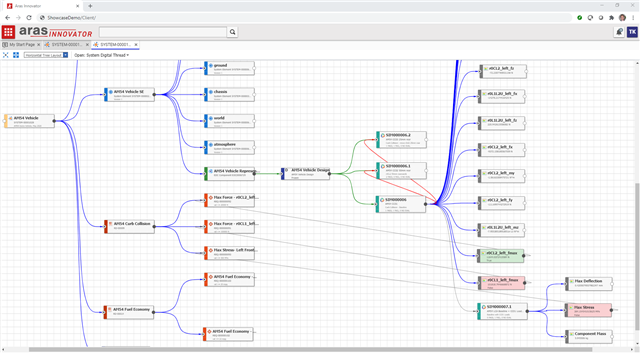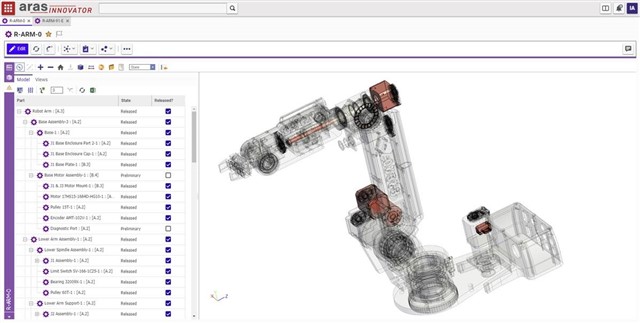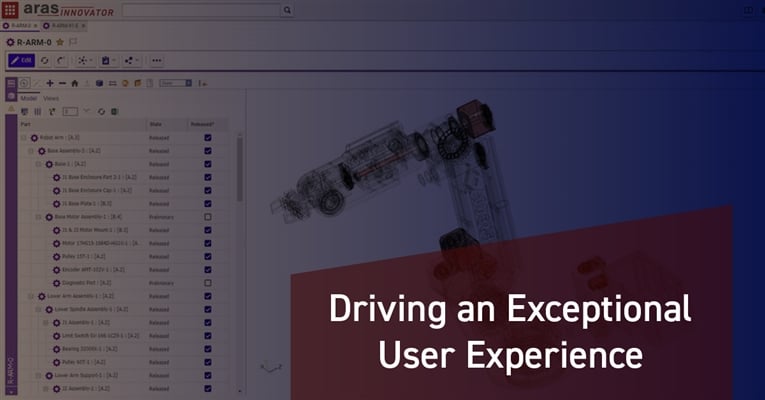A poor user experience (UX) reduces a team's productivity every hour of every day. For a large organization, the lack of productivity due to a poor UX can easily run into the tens of millions of dollars in lost productivity each year. During good times, this drives your costs higher, reducing your profit. But during the bad times, this lack of efficiency can be devastating.
One of the reasons PLM gets a bad rap is that, even within engineering, it’s been hard to use—let alone across the enterprise where most vendors don’t even have a consistent user interface or the ability to collaborate cross-functionally by easily using data across applications.
No coach would ever purposely place their players in a position to reduce their chances for success and hurt their ability to execute as a team, but this is exactly what happens when people are equipped with tools that have a poor UX.
In a previous life, on my first day managing the design of several major PLM systems, HR met with me to see if I could help them with the number one complaint by the engineers—the PLM system.
To say the users hated the system would be an understatement. There were many reasons, but chief among them was the experience. One key member had an Aras sign on his cubicle wall that said, “Discover Your Next Generation PLM.” The red Aras “A” was covered up by chart that showed a multi-generational plan for the existing PLM with many missed dates. The good news is, he’s now an Aras customer.

Here’s the thing: a poor UX is not just unproductive. It sends a clear and direct message to employees about their worth—that their commitment and time isn’t valued. When executives realize that users aren’t embracing the PLM strategy and the change they’re pushing, they respond differently. Some react by doubling down on clearer communications: “Use the PLM or else.” This may work a couple of weeks before go-live, but I believe threats are the exact formula to get the most intractable, passive-aggressive culture any competitor would wish on you. A dysfunctional culture is likely the result of many factors, but a strong contributing factor is the daily user experience.
According to the (State of Software Happiness Report 2019), over half of all employees have become unhappy at work due to the software they use. But even worse, roughly one-quarter of those surveyed said the software they are required to use at work has made them consider leaving their jobs. And more than an eighth of employees (12.5%) have left a job due to software. I know people that have done this.
If you think any of these statistics are an exaggeration, ask yourself when was the last time the users were surveyed? That’s a sign you care. Next, are your pillar systems at a 50% satisfactory level? In the past, I’ve seen some in the single digits. Prior to my experience at Aras, it was extremely rare to see PLM users that gave their PLM system a 50% satisfactory rating.
You may want to survey the executives as well because they’re typically twice as satisfied with systems than the end users. Why the discrepancy? First, I doubt the end user had much of a say in which PLM system was selected and why it continues to be retained. Second, executives don’t use PLM applications as much as end users, so they tend to have an overly optimistic view of what their people are experiencing.
Related to this, it’s not just the ease of use, but the total experience. How easy is it for users to access and work across your digital thread, your digital twins, your extended supply chain, and collaborate across domains? Do your users have easy access to data they need to perform their work? Or do they rely on manual workarounds, Excel spreadsheets, email, etc.?
The Aras platform provides the same UX across all Aras applications. Traditional PLM systems are made up of a portfolio of products based on different technology stacks, each with their own user interface. This is further exasperated by the fact that each product has to be integrated or connected making it extremely difficult to sustainably provide users with the right access to the right data at the right time.
In addition to a common UX, with Aras being built on a common platform, we don’t just guarantee your company’s upgrades, but the data is connected, so users can graphically digitally traverse their digital thread with out having to move from one product to the next hunting for data.
Below, is graphical navigation view, which provides the user with a particular view across the digital thread. In this case the vehicle on the left in yellow is pointing to requirements, which have a specific icon and are colored red. Off screen to the top you can see system elements in light blue, and a particular vehicle configuration in green pointing to a design representation used in three simulation studies. To the far right are the simulation results, which include connections back to any requirements that they should satisfy. The results with associated requirements are shaded in light green or pink to indicate whether they meet the requirement or not. This allows the user to visually navigate across their digital thread viewing everything in its current state, which makes it easy to head off potential problems and access data they need quickly.

Let’s add a few more. Can you easily configure PLM-related applications? Can your PLM be easily customized? In a recent CIMdata Commentary, “Platform Success with Aras Innovator,” one Aras customer reported that their experience customizing Aras Innovator was “customization without regret.”
Not to belabor the point, but if your vendor can’t upgrade your customizations, then your customer experience is a ticking time bomb. The longer you stay on any given version, the less productive you become until you get stuck and are not able to cost effectively upgrade, which is becomes a terrible experience for the user.
Can you visually collaborate with your co-workers? (shown below) Can you do that from any application?

Do you have to go back to a CAD files to try and interpret them or can you query the product made up of multiple CAD assemblies and sub-assemblies? Verdi Ogewell recently wrote an article on Engineering.com, entitled "Aras PLM Takes Hold-of the Digital Thread with New Dynamic Platform for Product Navigation and 3D Interaction," which describes our newly released platform service, Dynamic Product Navigation (shown below), which allows users anywhere across the digital thread to dynamically query a product using PLM attributes from a product originally made up of multiple CAD assemblies (i.e. NX, CATIA, Creo, Innovator, SOLIDWORKS, etc.). My question to you is, are you providing your users with capability to do this across your product lifecycle?

What does all of this have to do with UX? The easier it is for the user to get their job done and collaborate with their co-workers, the happier and more productive they are and the more profitable the organization is.
Today, we as consumers expect devices and application to be intuitive. We want to find and communicate with whomever we want/need to and do what we need to do with simplicity and ease. This should be the same at work, except I maintain that for a good percentage in PLM and ERP, that’s not what’s going on.
Nearly 95% agreed or strongly agreed that software can make them more productive at work. (State of Software Happiness Report 2019) Yet the PLM tools (ERP, too) that users are forced to use are often woefully inadequate.
Here are a few things I’d consider when defining a strong user interface:
First, the UX should be current. At Aras, we put out new UX enhancements across all our applications, which have the same basic design, every six weeks. Specifically, that means we added new UX enhancements in Aras Innovator 12.0, SP1, SP2, SP3, SP4, SP5, SP6, SP7, and SP8, and will continue. Some are shown below.

If you’re stuck on a legacy PLM, how good can your UX be? It reminds me of a book written by Garrison Keillor called "Lake Wobegon Days." Lake Wobegon is the town “that time forgot, and the decades cannot improve.” But that’s okay because “all the women are strong, all the men are good-looking, and all the children are above average.” I maintain, if time forgot your PLM, you’re kidding yourself if you think you’re strong and good-looking. And your children can’t be above average.
Second, your PLM applications should have a consistent look and feel across all the applications. Most PLM vendors use different technologies and interfaces, which is the result of billions of dollars of acquisitions. The PLM provider can rebrand itself and provide a special SaaS portal or call it a “business platform,” but that doesn’t help the user that needs access across the many applications that make up their PLM system. A PLM system is not a PLM platform. In a PLM platform, all applications from the vendor, third parties, or from the customer themselves are self-contained.
While it’s unrealistic to believe you can use one technology stack across a digital thread (i.e., CRM, ERP, etc.), there is no reason you should use different technology stacks within PLM. This defeats the purpose as it cuts across the entire product lifecycle. In the case of an Aras user, if you know the UX concepts of Aras Product Engineering, then you know Aras Requirements Engineering, Aras Technical Documentation, Aras Manufacturing Process Planning, Aras Digital Twin Core, and so on.
Third, although this is obvious, you need a clean layout. Users love simplicity and real estate (screen space) to do what they need. If you can’t sit down and find parts and begin to do work without training, there’s a problem.
Too often, I see organizations forced to change their business processes to match new software rather than the other way around. This inefficiency racks up. Even if a task takes a few minutes longer to complete, across a large enterprise, this can add up to thousands of hours of wasted time per year.
The wrong software experience makes employees dissatisfied. Right now, in the pandemic, most companies are rethinking their strategies around PLM and I’d urge them to focus on what users experience across their digital thread along with their access to different applications. In 2019, many people surveyed believe their organization’s software selections impact their happiness. (State of Software Happiness Report 2019)
Why not give them a better experience? Do POCs before you subscribe. Also, take feedback and work to incorporate it in an incremental deployment. And do an upgrade in the middle of the deployment. How many of you have ever done that? It’s not that uncommon with Aras deployments, including customizations. Because we can and still deploy quickly. But regardless, the point isn’t the speed to deploy or time to value—it’s that we can provide what users want.
Don’t let time pass you by. Save yourself millions, improve your product, give your users an exceptional user experience, and be happy.

